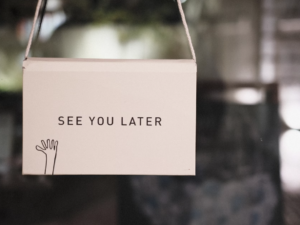As Valentine’s Day approaches, let’s explore our love affair with the semicolon. Actually, it’s more like a flirtation with an old flame who’s often misunderstood.
The proofing team sees the semicolon used incorrectly as a substitute for colons. We’ve also seen it used incorrectly to replace dashes. And while this punctuation mark is made up of a comma with a period on top, it’s not a true substitute for either.
A semicolon is meant to join two closely related independent clauses. In other words, it joins two complete sentences that share a logical connection.
- For example: “We care a great deal about our associates; they are the cornerstone of our day-to-day business.”
Note the first word of the second clause is not capitalized. You’d only capitalize it if it were a proper noun.
- For example: “John leads the team here; Jill is in charge of sales.”
Another common mistake when using the semicolon is adding a conjunction like “but” or “and” before the second clause. If you use a semicolon, no conjunction is necessary. You can write, “This blog is great, and I’m learning so much.” Or you can write, “This blog is great; I’m learning so much.” Both are correct – and true! (Right?)
If all this talk of clauses and conjunctions has your head spinning, go back and check out Megan’s blog from December.
Another prime example of when to use a semicolon is when you have a conjunctive adverb (like however or therefore) linking two independent clauses. For example: “We were able to save fresh food in one of our trucks; however, our frozen foods were not salvageable.”
Finally, semicolons are also used to divide the items of a list if the list is long or contains internal punctuation. In these cases, the semicolon helps readers keep track of the divisions between the items. For example: “We have associates who are ready to respond in the following cities: Topeka, Kansas; Lansing, Michigan; Orlando, Florida; Portsmouth, Virginia; Greenville, South Carolina.”
Now, if you’re listing those same cities and states with bullet points, please DO NOT use semicolons like this:
- Topeka, Kansas;
- Lansing, Michigan;
- Orlando, Florida;
- Portsmouth, Virginia;
- Greenville, South Carolina
Show the semicolon some love; it needs it.
We hope this clears up any confusion related to the semicolon and makes you more confident in your writing. That said, with Valentine’s Day right around the corner, we know you’ll probably end up using the semicolon as part of a winky face before using it correctly in an upcoming proposal.

Don’t be sad. We’ll be back on the first Monday next month with a new blog post. If you can’t wait that long – whether because you have a topic you’d love us to cover, a question or you simply want to throw your two cents into the pot – we love talkin’ shop, so drop us a line.






